
The Highland Building looms behind the tiny shops of Ellsworth Avenue.
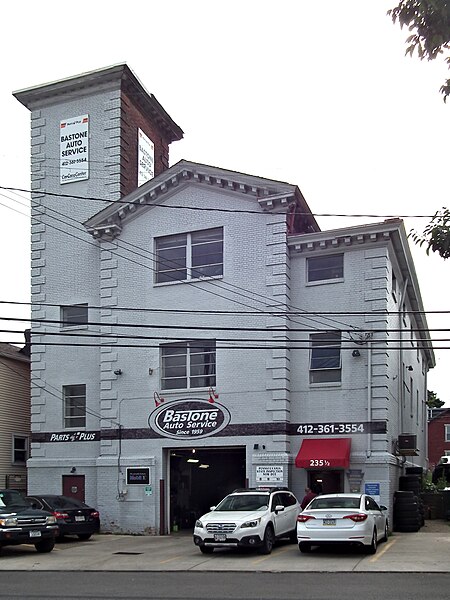
Above is the old Carron Street Baptist Church, which as you might guess is on Carron Street. It has not been a church for quite a while, and it has gone through some substantial alterations on its way to becoming a garage, so old Pa Pitt is not quite sure whether it ought to be added to the collection of churches with the sanctuary upstairs, or whether it simply had a high basement. (Update: The answer is that it had a high basement. The church was designed by the Beezer Brothers, and we have found the architects’ original rendering.)
From the church that became a garage we walk just about a block to the garage that became a high-class furniture store.

This was the South Highland Garage, and as a work of architecture it is probably more distinguished than the Carron Street Baptist Church ever was. (Update: Having seen the original rendering of the church, old Pa Pitt unreservedly withdraws this statement.) If you like, you may formulate your own sarcasm about the true American religion and our fitting sense of architectural priorities. But then you can remember that Calvary Episcopal Church and Sacred Heart are just a short stroll away, and your sarcasm will wither on your tongue.

This row of Queen Anne houses on Negley Avenue in Shadyside surely strikes every passer-by, if for nothing other than their turrets with witches’ caps. The other details are also worth noticing: the ornamental woodwork and the roof slates, for example. The houses are just detached enough that we can see that the sides are made of cheaper brick rather than the stone that faces the street.

The last one in the row lost its cap many years ago, but in compensation has been ultra-Victorianized with extra polychrome woodwork, as we see on the dormer below.

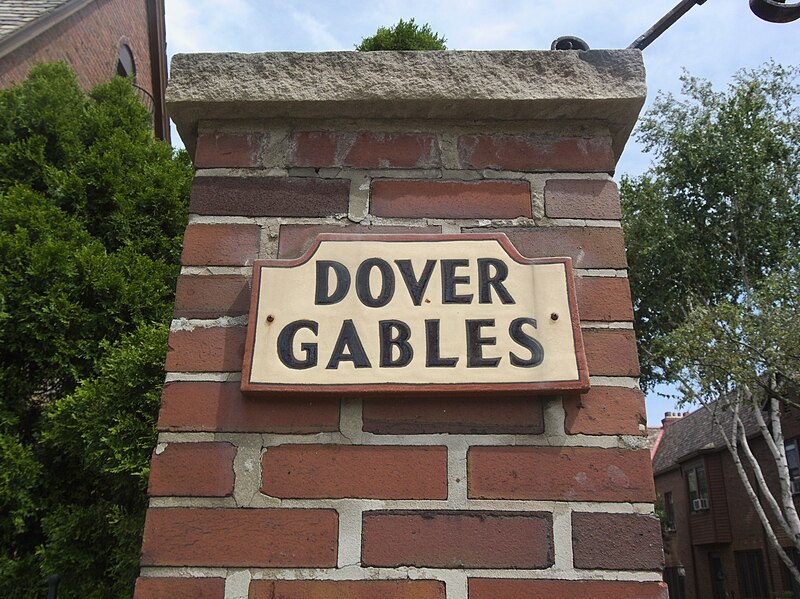
Shadyside is full of little townhouse communities that close themselves off from the rest of the world, either by facing an impossibly narrow dead-end private street, or, as here, by having no street at all and devoting the space between the rows to garden. There are a few other such plans here and there in the city, but only in Shadyside did they become a typical form of development. This one is meant to look as much like an English country village as a townhouse plan can look when you cram it into a narrow space one city block long. Old Pa Pitt was not able to determine the architects, and neither were other researchers he stumbled across. But Father Pitt is not the only one to point out how much this plan resembles a miniature Chatham Villlage.

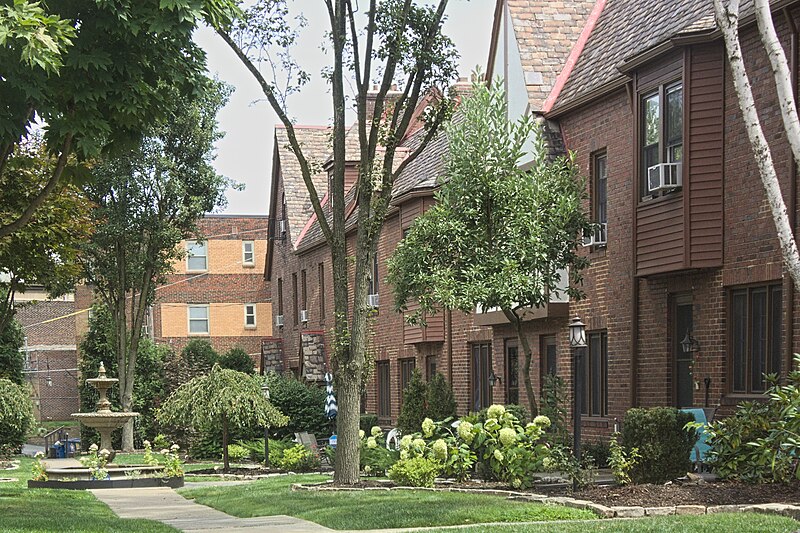
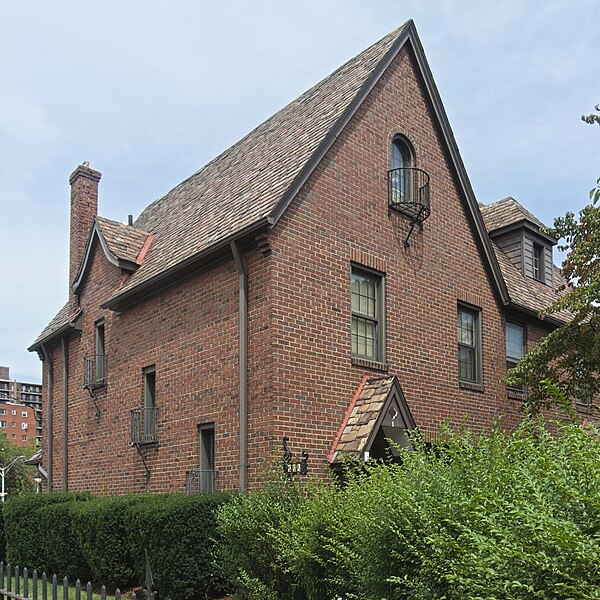
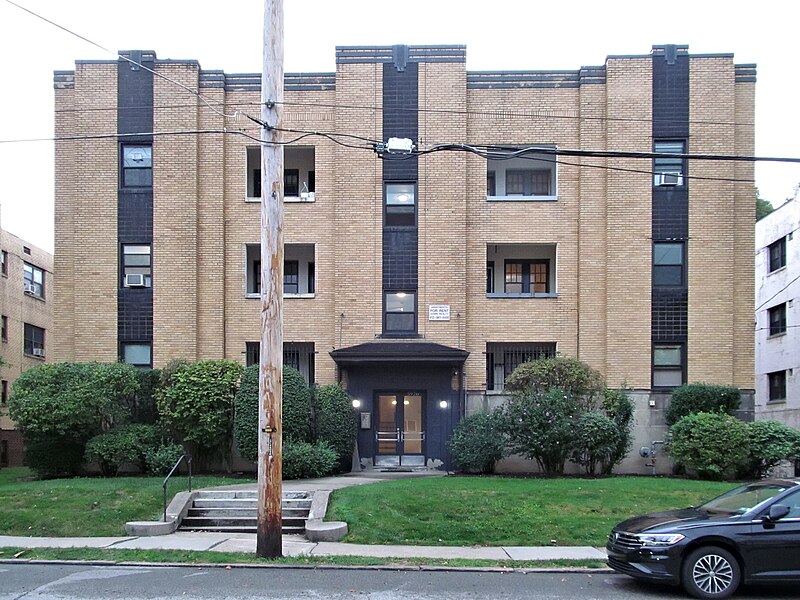
Ornament is minimal but effective on this moderne apartment building on Walnut Street. The front has a classical symmetry emphasized by strong black verticals, with cornice bands tied together in little deco knots. The inset balconies at first hardly register as balconies, but give the apartments behind them a private outdoor space.

Opened in 1930, this Art Deco palace had an irregular pentagon of a lot to fill. The architect, R. Garey Dickson, solved the problem by making a nearly (but not quite) symmetrical face (shown above) along Elwood Street, the longest side of the pentagon, and then filling the rest with an L-shaped building at an odd angle to the front.
R. Garey Dickson is another of those second-string architects who thrived in comfortable obscurity. He was part of a family of architects, all of whom called themselves Garey Dickson and did not always even distinguish themselves by their initials (C. Garey Dickson had a son named C. Garey Dickson who worked in his firm). Much of their work was in Washington (Pennsylvania), where R. Garey designed the splendid Jacobean palace for the YWCA at 42 West Maiden Street. He also pops up as the architect of a small chateau from 1929 in Forest Hills.

The Art Deco ornaments are worth pausing to admire.


This 1913 Jacobean palace was designed by Henry M. Kropff (his name is misspelled “Kroff” on the Pittsburgh History and Landmarks Foundation plaque on the building), and Father Pitt knows absolutely nothing about the architect. Well, that is not entirely true. We have a few stray facts. An obituary tells us that Henry Moeser Kropff was born in 1876 and died in 1952, and his parents were Ferdinand and Melvina Kropff. The AIA Historical Directory entry for Henry M. Kropff tells us that he died in August of 1952, and he had been a member of the American Institute of Architects since 1916. In his long career, he must have produced something besides Alder Court, but a Google search turns up absolutely nothing else. In fact it took three different search engines to turn up the little information old Pa Pitt has just given you. Yet Google Books tells us that Mr. Kropff was very active in the Pittsburgh Architectural Club in the early twentieth century, designing posters for its exhibitions. (From the Inland Architect for July, 1900: “The Poster of the Exhibition, by Mr. Henry M. Kropff, leaves nothing to be desired. The ‘X’ in ‘Exhibition’ looks better reversed.”)
More trawling in trade magazines may dredge up something interesting eventually. We may suspect that there are numerous apartment buildings and private houses by Henry M. Kropff still standing in Pittsburgh and the surrounding area.
Update: See the very kind comment from Joanne, who used old newspapers to find several other buildings by Kropff. Most are private houses in rich neighborhoods.
At any rate, this is a splendid building, well deserving of its landmark status. It is the “court” part of Alder Court that makes it really pleasant: a beautiful gated garden with shady trees and colorful plantings.
Father Pitt has not been able to identify the coat of arms that presides over the courtyard:
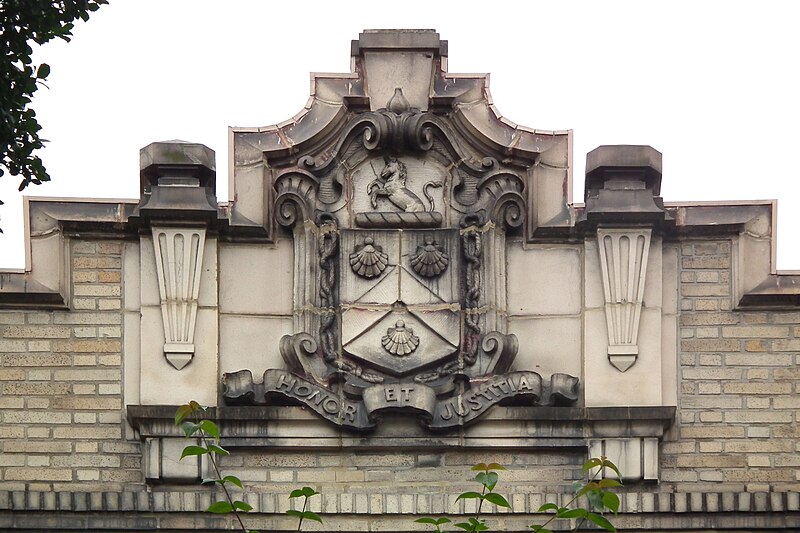
Are these the arms of the original owner? Or just something the architect or his stonecarver made up? Update: See the comment from “von Hindenburg” below, who identifies these as the arms of the Bayard family. The apartments were built on what had been the John B. Bayard estate.

Update: See the comment from David Schwing below identifying this as a 1906 design by Chicago architect Samuel N. Crowen. Father Pitt looked at some of Mr. Crowen’s other buildings, and the ones from this period certainly seem to bear a stylistic resemblance, although in his later works the architect turned more conservatively classical. Compare this apartment building on Google Street View, with its similar corner balconies, square windows, exaggerated cornice, top floor set off by a masonry stripe, and entrance surrounded by Art Nouveau curves. Imagine how much more that building might resemble this one if this one had not been painted.
Father Pitt keeps the original article, with all its speculations, below, so that his readers can see how his mind works.
Today this strange building that makes faces at you as you go by has no name; on Google Maps, it is called “Apartment Building.” But on a 1923 map it is marked as “Emerson,” belonging to a B. F. Newman. It first appears on the 1910 layer of the Pittsburgh Historic Maps site, where property owners are not marked. And with that, old Pa Pitt has exhausted all the information he has been able to gather about this building. Searching for information is made more difficult by the fact that there is a later apartment building in Shadyside also called “The Emerson,” a Frankenstein construction with a Fifth Avenue mansion at its core encrusted with modern growths of differing ages and styles.
At first sight this has the outlines of an ordinary early-modern apartment building, but when you look up at the balconies you find the building looking back at you.



We know that this building was put up before 1910. Father Pitt knows of only a few architects working in Pittsburgh at the time who were batty enough to do something like this.
Father Pitt’s first guess is Titus de Bobula, whose churches are strongly marked with Budapest Art Nouveau. He also did commercial and apartment buildings, and his career is obscure enough that a number of commissions have probably gone unrecognized. He is known to have done the Everett Apartments (1907) on Ellsworth Avenue at Copeland Street; it has similarly inset balconies flanked by decorated square pilasters, and it uses exactly the same terra-cotta cornice moldings as the ones on this building.
Frederick Scheibler, our most famous early modernist, is known to have designed about 150 buildings around here, of which Father Pitt has fewer than forty in his Great Big List as of this writing. His style varied over the years of his career, but the whimsically grotesque faces do not seem like his sort of thing.
Kiehnel and Elliott were also working here at that time. They were influenced by German modernism, and when they later moved to Miami they became famous for extravagantly decorated Art Deco designs. They are a possibility.
We might also mention Edward Keen, about whom Father Pitt knows nothing (even his name: in some sources it is Kern) except that he designed the D’Arlington in Oakland, a building teetering on the border of classicism and modernism whose lines strongly remind us of this building.
So there you have it: an enigma, and Father Pitt would certainly be grateful for any scraps of information about this building.
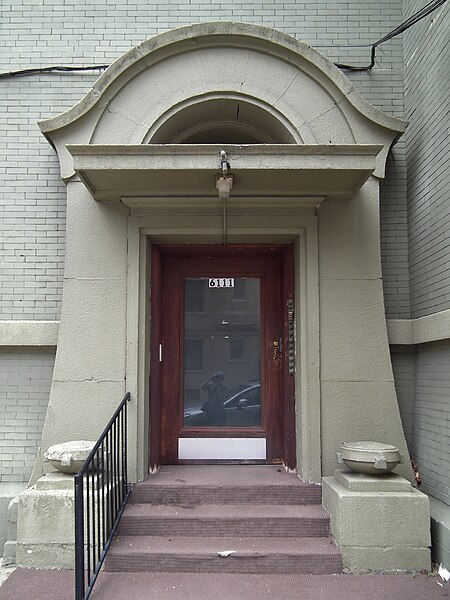
The curving lines of this entrance also strongly suggest Titus de Bobula.






This block-long palace is a startlingly imposing building to run across in the residential back streets of Shadyside. The dwellers in the houses surrounding it must feel a glow of confidence knowing they are well protected should the Prussians invade. The building was designed by the W. G. Wilkins Company, also responsible for the Maul Building and the Frick & Lindsay Company Building (now the Andy Warhol Museum). It opened in 1916.



Thanks to a kind correspondent, old Pa Pitt has an opportunity to prove himself right about one thing and wrong about something else. Being wrong is almost as good as being right, because it means learning something new.
Our correspondent sent two pictures that appeared in an advertisement that ran in the Post-Gazette in 1929. The ad was for Frigidaire refrigerating systems, as used in prominent buildings in the city.
First, the Cathedral Mansions apartments on Ellsworth Avenue.
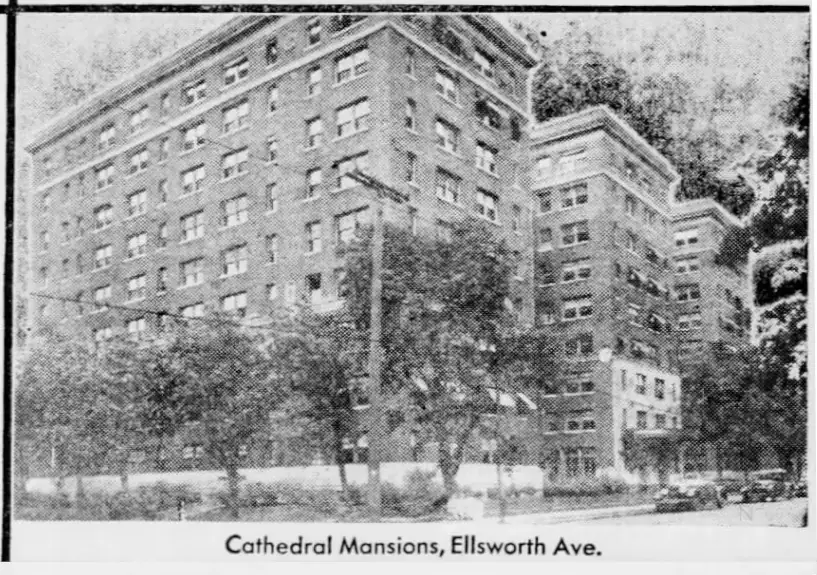
Here Father Pitt was right. A little while ago, we ran this picture of Cathedral Mansions as it looks today:

At that time we mentioned that we suspected it had lost a cornice. Father Pitt was right about that, as you can see from the 1929 picture.
Now, here’s the one we were wrong about:
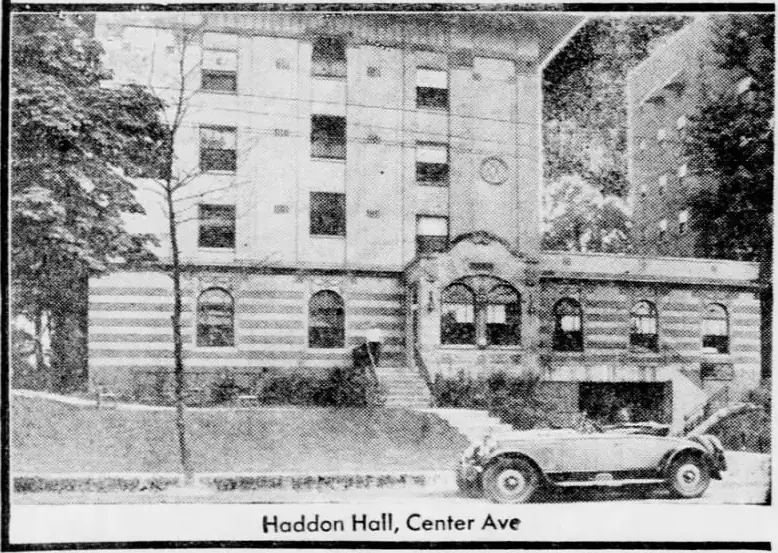
This building is now an apartment building called Hampshire Hall. As “Haddon Hall” it was a hotel with apartments. Here is what it looks like today:

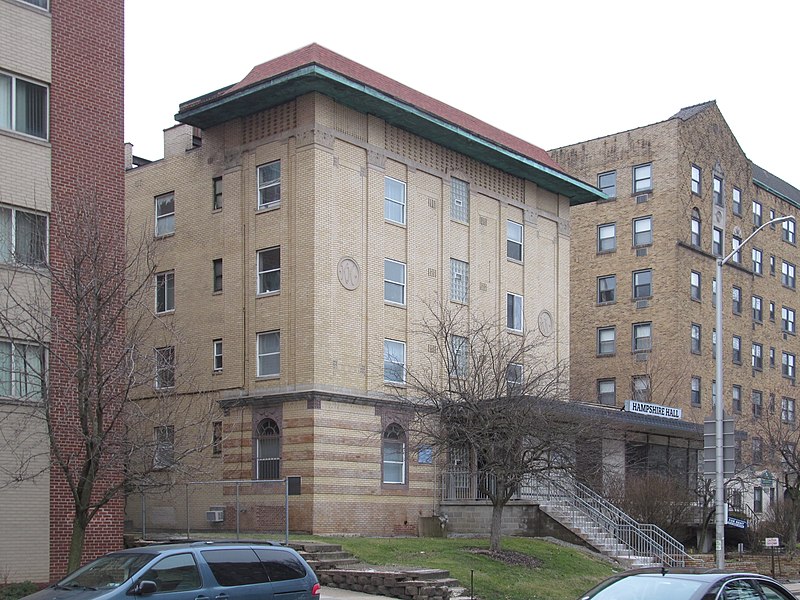
The obvious change is that modernist growth on the front. When he published these pictures, Father Pitt wrote, “It appears to be a glass enclosure for what was once an elegant verandah.” That is wrong. It seems to have been a replacement for the original dining room or lounge of the hotel. It was probably put there in about 1961: a newspaper ad from December 22, 1961, promotes the Walt Harper Quintet’s appearance at the “newly remodeled Haddon Hall Lounge.”
Many thanks to our correspondent for the pictures, which give us new information about these two notable buildings. If anyone knows the architect of either one, but especially Haddon Hall/Hampshire Hall (which is in a distinctive modernist-Renaissance style), Father Pitt would be grateful for the information.